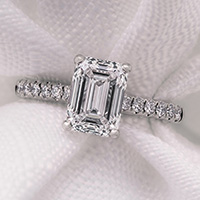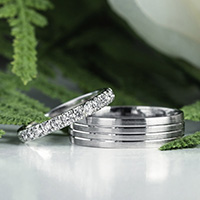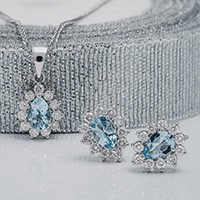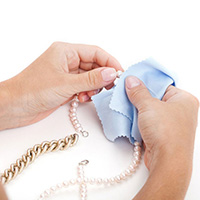- Home/
- Birthstones By Month | Find Your Birthday Gemstone | James Porter
Birthstones - The Guide
In this guide
What are Birthstones?
Many precious gemstones have a long and rich history which have created superstitions and folklore. Much like horoscopes, it is believed that each month of the year is linked to a particular gemstone, known as a birthstone.
Although there are multiple birthstones for each month, we have chosen the most popular on the market and described each month below, simply click on the month from the menu above. Whether you are looking for a gemstone linked to the recipient’s birthday, or something to commemorate a special occasion or life event, we hope this guide can make a piece of jewellery something truly personal, that will be treasured for a lifetime.
Birthstone Hardness
Coloured gemstones come in many different forms, each with a different chemical make-up. The industry tool for measuring the hardness and durability of a gemstone is called the Mohs scale of hardness (shown in the image). It supplies each gemstone with a hardness rating from 1-10, with diamond being 10 and talc being 1.
A gemstones hardness rating should not put you off buying a particular stone however; consider it as a guide only so you know what to expect. A ring with a gemstone on the lower end of the Mohs scale would be more suitable as an occasional piece, rather than for everyday wear.
This is why sapphires and diamonds, both very high on the Mohs scale, are the most popular gemstones for engagement rings - for a piece of jewellery that is meant to be worn every day for the rest of your life, you want to make sure it won’t lose its sparkle by being scratched!
If you’ve fallen in love with a particular gemstone that falls low on the hardness scale, but still want to be able to wear it everyday, consider it in a necklace or pair of earrings as these pieces are much less likely to be knocked or scratched.
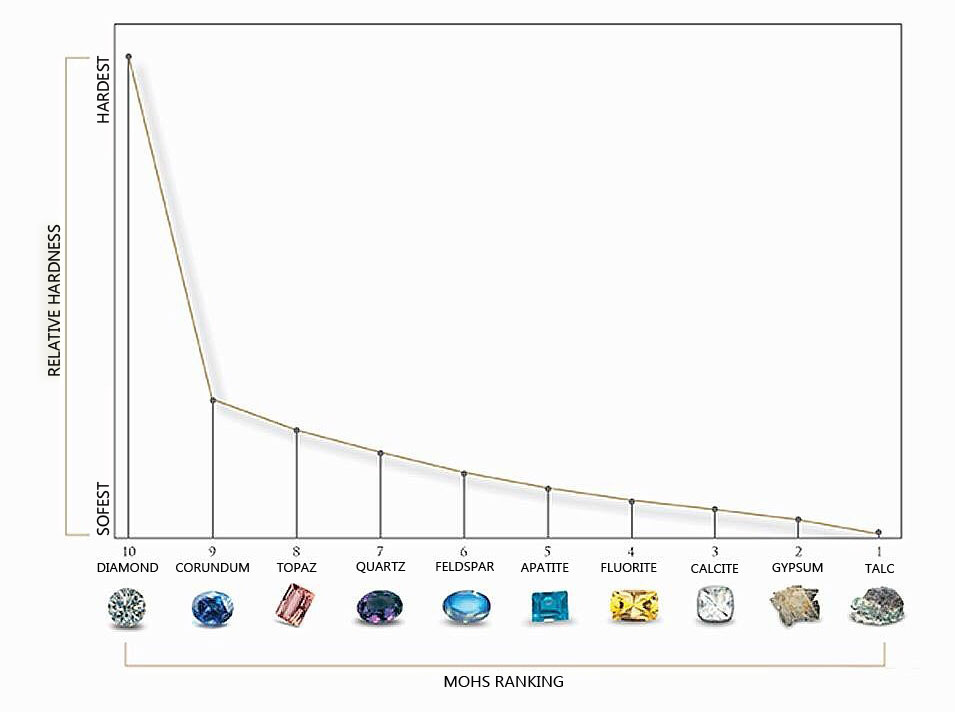
January - Garnet
Garnet is traditionally a deep red stone. The red version of garnet is the most popular and well known version of the stone, but there are also demantoid garnets which are green in colour and extremely rare.
- Source: Garnets are mined in Brazil, India and Madagascar.
- Ideal: In pendants and earrings and the rich red stone looks brilliant set in yellow gold.
- History: Folklore tells us garnets are thought to protect the wearer from nightmares and ghosts. They are also thought to bring good luck to the wearer. Garnets were extremely popular in the Victorian era, where the dark red indicated wealth.
- Symbolism: Garnets symbolise friendship, loyalty and trust, and were often given to travellers to wish a safe journey and swift return. This makes them a great gift for a special friend starting a new journey in life.
February - Amethyst
Amethyst is a vitreous (glass like) purple gemstone. It can be found in many different shades of purple, from very pale lilac to an almost opaque dark purple. Amethyst has been popular since the Ancient Greeks and its beautiful colouring means it is still popular today.
- Source: Amethysts were originally thought to be a very rare gemstone, and likened to emeralds and sapphires until large deposits of amethyst were found in Brazil and Uruguay.
- Ideal: Anywhere! Amethyst looks particularly striking when set in all gold colours but the stone looks great paired with any jewellery types. Amethyst is a more affordable stone than other which allows for a larger carat weight so you may see it often in ‘statement pieces’.
- History: Amethyst has always been popular with royalty. The ancient Greeks thought it would protect the wearer against drunkenness and so carved they wine goblets from amethyst (we have not tested if this works though!).
- Symbolism: Amethyst has long been thought of a stone to bring peace, good health, and contentedness. The stone would be a suitable gift for a loved one after a difficult time.
March - Aquamarine
Aquamarine is a translucent pale blue gemstone, which is actually part of the emerald family. emerald and aquamarine are known as ‘Beryl’ stones, which means they have similar properties and hardness but look very different.
- Source: Aquamarines are mined throughout the world. The best quality aquamarines are mined in Columbia and Madagascar.
- Ideal: Aquamarine looks beautiful set In a white metal such as platinum or white gold. The cooler colour metal perfectly reflects the pale blue from the gemstone.
- History: The name aquamarine literally translates as 'sea water' and the ancient Romans thought the stone would protect the wearer when travelling at sea. They also thought it could provide energy and cure laziness!
- Symbolism: The cool blue of aquamarine is said to bring the wearer calmness, courage and clarity - perfect for a loved one about to begin a new career or life event.
April - Diamond
Diamonds have been lusted after since their first recorded existence in the 4th century BC. The earliest known diamonds were found in rivers in India, and even then they were recognised as beautiful and valuable.
- Source: Most of the current diamond mining occurs in South Africa, Canada and Australia, but there are also mines in Russia, Botswana and Brazil.
- Ideal: Anywhere! The clarity of diamond means that it works well with all metal colours and settings. Although if you aren't ready for marriage, avoid a ring as a birthday gift - diamond is the traditional stone in an engagement ring.
- History: The name diamond comes from the ancient Greek 'adamas' meaning unbreakable. Ancient Greeks and Romans believed diamonds to be the tears of the Gods, or splinters from broken stars.
- Symbolism: Diamonds have long been associated with everlasting love and devotion, making them the most popular choice for engagement rings. Diamond is also the traditional gemstone for a 60th wedding anniversary, owing to its strength and integrity.
May - Emerald
Emerald is a beautiful green gemstone which is said to have many healing properties. It is known for its beautiful vivid green colouring and is from the same family as aquamarine. Emerald is from the beryl gemstone family, meaning it is very hard.
- Source: The most beautiful and expensive emeralds are mined in Columbia, and more recently in Zambia.
- Ideal: Many emeralds you see will have many inclusions inside. These inclusions (marks inside the stone) are other minerals and can create weak points in the stone. Due to its brittle nature, emeralds are best set in an occasion ring, that won’t be subject to too many knocks and wear. For pieces that you’ll be wearing more regularly, a pendant or earrings are a better choice.
- History: Emeralds are thought to provide a healing effect on the wearer. They are also thought to improve loyalty and bring domestic bliss.
- Symbolism: An emerald’s bright green hue echoes the new leaves on the trees in spring, making it the perfect symbol for fertility, rebirth, and new starts - consider this as a gift for someone starting again or moving to a new chapter in life.
June - Pearl
Unlike other precious gemstones, pearls are not mined but are formed naturally in living molluscs. Pearls occur spontaneously in the wild, and the most beautiful pearls command a very high price tag. Cultured pearls are natural but farmed, and still provide a beautiful lustre.
- Source: Cultured and freshwater pearls are found in different molluscs in the sea or bodies of freshwater.
- Ideal: On the neck or in earrings. Bracelets and rings mean the pearls are exposed to more wear and tear and can cause the pearl to fracture or break.
- History: Pearls were the first precious gemstone known to man; the ancient Romans, Egyptians and Chinese all valued pearls highly.
- Symbolism: Pearls have long symbolised wealth and wisdom, and their delicate lustre is also often thought to represent innocence and purity, making it an ideal gift for a first piece of precious jewellery.
July - Ruby
Ruby is a naturally occurring red gemstone which has a long history in jewellery. Its deep red colour has made it a sought after gemstone since around 200BC! Frequently associated with royalty, it has been one of the Cardinal gemstones (the others being diamond, sapphire, emerald and amethyst) for a very long time.
- Source: The most beautiful rubies have been mined in Burma, now Myanmar since around 600AD. They are also mined in Cambodia, Afghanistan, Brazil, Columbia and Macedonia. The rubies mined in Macedonia have a more pinkish raspberry tone.
- Ideal: Anywhere! Ruby looks fabulous set in all gold colours and its durability makes it great for everyday wear items.
- History: Ruby is mentioned as far back as biblical times, and in ancient Sanskrit was called 'Ratnaraj' meaning 'King of Precious Stones'. It was also laid beneath foundations in ancient China as it was thought to secure a good future for the building.
- Symbolism: A ruby’s bright colour has long made it a symbol of energy and power, but also of passion and romance, making it an ideal gift for Valentine's Day.
August - Peridot
Peridot is an unusual green coloured gemstone. Unlike some other precious stones it is only ever found in green, although this can vary between paler and deeper tones. Peridot is formed deep beneath the earth's crust, and is brought to the surface by volcanic activity.
- Source: Peridot is found in China, Myanmar, Pakistan and Zabargad Island (also known as St John's Island) just off the coast of Egypt in the Red Sea. There is also extraterrestrial peridot, which find their way to Earth within meteorites, but you won't find any of that for sale in a jewellers!
- Ideal: It’s slightly more delicate nature makes peridot more suitable for a necklace, earrings or as a dress ring. Its vibrant colour looks good set in both yellow and white gold.
- History: Peridot is one of the earliest mined gemstones, with records of it dating from 1500BC. Historians believe that Cleopatra's famous emeralds may in fact have been peridot. Egyptians referred to peridot as 'Gem of the Sun' and was thought to bring peace and protection to the wearer.
- Symbolism: Historically, peridot was used as a talisman to ward off nightmares and promote emotional balance. Its vivid green hue has long symbolised positivity and good luck, making it an ideal gift for someone who is due to take some important exams, has a job interview or just needs some good luck!
September - Sapphire
Sapphire can be found in many colours including pink, green, white, yellow and purple. Most commonly it is a vitreous blue colour. Sapphire is one of the cardinal gemstones and has a long history associated with royalty and romance.
- Source: The highest quality sapphires are found in Kashmir and Myanmar (formerly known as Burma). Ceylon sapphires are mined in Sri Lanka (formerly known as Ceylon) and the stones found there are incredibly rare and very expensive. Australia, Thailand, and Madagascar also have sapphire mines still active today, and produce slightly darker stones.
- Ideal: Its hardiness makes sapphire ideal for statement engagement rings as well as jewellery which can be worn daily. The deep blue complements the brilliant sparkle of diamonds, and looks stunning set in white or yellow gold.
- History: The rich blue was thought to symbolise heaven among clergymen in the Middle Ages and was worn by them frequently. Sapphire has long been associated with royalty and nobility, which was further emphasised in 1981 when Princess Diana received an iconic sapphire engagement ring, which has since been inherited by the Duchess of Cambridge.
- Symbolism: Because of their association with heaven, sapphires are believed to attract protection and wisdom from above. It is thought to instil truth and sincerity in the wearer, making it a thoughtful gift for a loved one who may be at a crossroads in their life in need of a little divine inspiration!
October - Opal
Opal has a long and unusual history. It is a naturally occurring gemstone which displays all the colours of the rainbow. There are two main types of opal; white opal, which has a light almost milky look, and black opal, which is much darker and makes the iridescent colours more pronounced.
- Source: Opals are mined in Australia and Ethiopia. Although they look similar, they are composed differently - Ethiopian opals are porous, which means prolonged exposure to water can affect their iridescence.
- Ideal: Opals are best set in earrings or necklaces as they are not easily damaged there. If worn in a ring we would recommend it as more of an occasional wear item.
- History: Ancient Greeks thought opal provided the wearer with the gift of prophecy, and that it would also guard against disease. It is regarded as a lucky or magic stone as it shows all the colours of the spectrum. In 1829, Sir Walter Scott published the novel 'Anne of Geierstein,' in which her magic opal talisman was destroyed by a drop of holy water. This caused opal’s popularity to drop significantly after its publishing, as many feared it be unlucky.
- Symbolism: The bright flashes of colour found within an opal have made it a symbol of passion, seduction, and desire - making it a potential gift for a new love to express affection!
November - Topaz
Topaz comes in many colours and shades, similar to the sapphire. Although blue is the most popular hue, topaz can be found in many shades including white, and yellow (more commonly known as citrine).
- Source: Topaz are mined in Utah in the USA, the Ural mountains in Russia, Brazil, Sri Lanka and Afghanistan.
- Ideal: In occasion rings, statement necklaces and earrings. Topaz can be a large stone so it’s often found in statement jewellery items.
- History: Topaz stones have long been associated with strength. During the Renaissance period (1300-1600) people believed that topaz had the power to break magic spells and dispel anger.
- Symbolism: The different colours of topaz have been thought to offer the wearer different properties. Blue topaz is thought to promote learning and understanding - perfect for a student going to university. Yellow topaz (Citrine) has the nickname of the ‘merchant's stone’, as it is thought to bring prosperity and fortune - ideal for someone with aspirations of climbing the career ladder.
December - Tanzanite
Tanzanite is a unique and very rare gemstone. It is a vivid blue-violet colour and can appear to have different colour tones depending on the lighting. It does not have the long history of many of the other birthstones as it is a very recent discovery.
- Source: Only found in Tanzania.
- Ideal: In a necklace or earrings. Due to its rarity and beautiful colouration it would also make a beautiful statement ring.
- History: Tanzanite was discovered by Tiffany and Co in 1968 and was named after its source. It is the first change to the American Gem Trade birthstone calendar since 1912.
- Symbolism: Tanzanite is known as a gemstone of transformation - it is thought to help the wearer make their dreams a reality. For someone about to start their own business or make the jump towards a long awaited goal, tanzanite may attract positive energy needed to succeed!
Important to remember:
- Our guide is a quick introduction to the most popular gemstones by birth month. If your partner/friend or family wants a gemstone that isn't their birthstone there are no rules or connotations to prevent you from sending a birthstone that isn’t from their birth month.
- For each gemstone above, there are a number of alternatives but to simplify our guide we have illustrated it with the most popular stones for each month. If you have any queries or questions about other gemstones or you’d like to learn more, you can contact us to speak to an expert.
- Everyone is different and everyone treats their jewellery items differently, but if you know someone to be slightly heavy handed, clumsy or has a job involving their hands, try to avoid the softer gemstones.
Have A Question?
Have A Question?
Contact us by phone at 0141 221 5855 or by email at [email protected]. We love our work and will be happy to help you with your query, we can also book a convenient time for a consultation to find the exactly what you need..
 Back to top
Back to top
 Basket
Basket

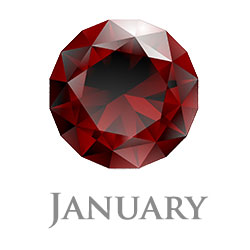
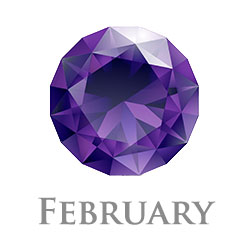
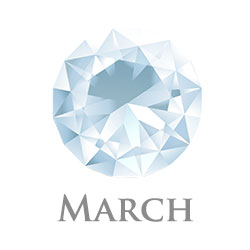
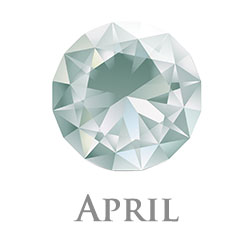
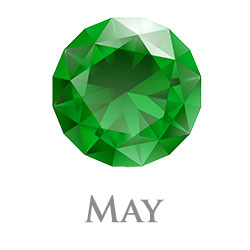
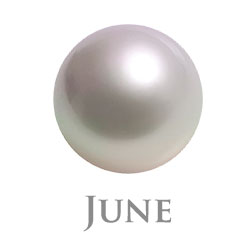
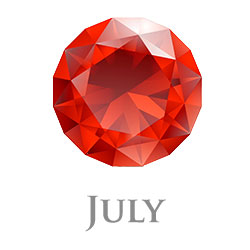
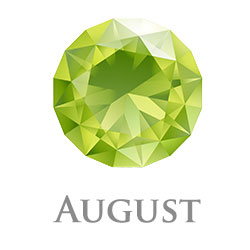
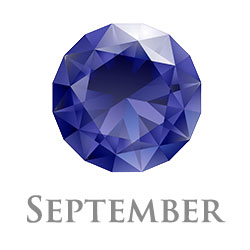
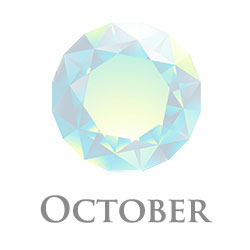
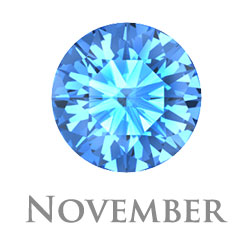
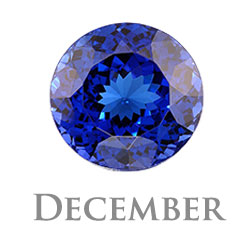
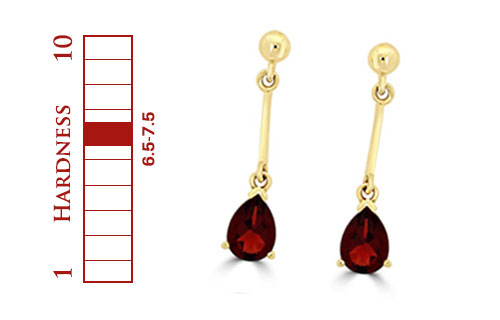
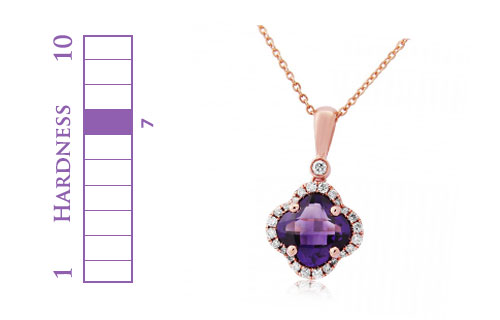
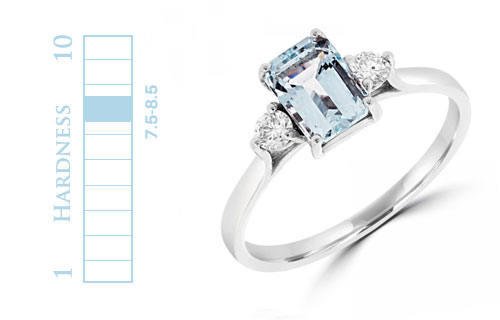
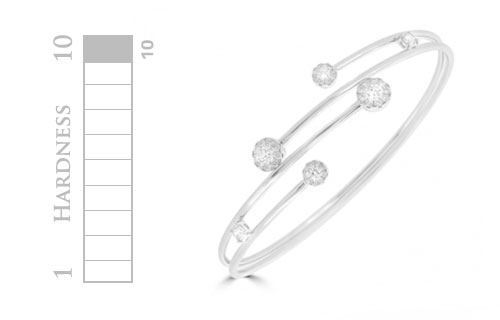
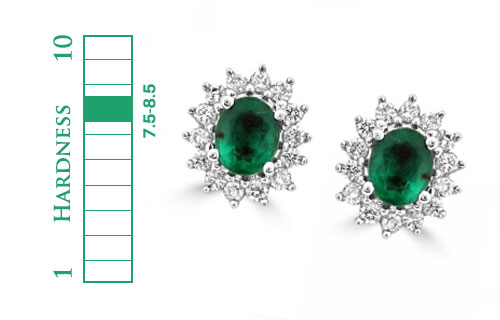
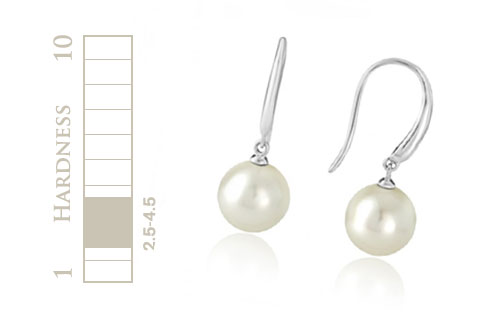
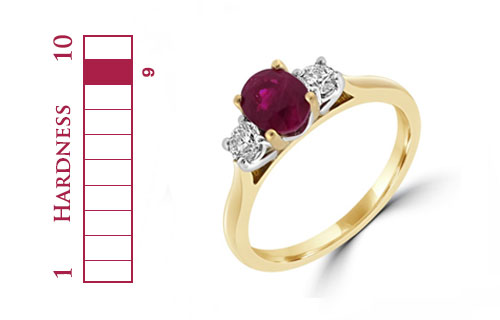
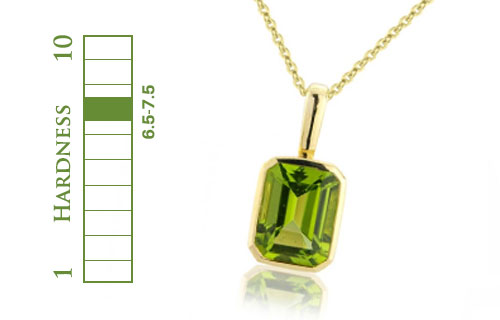
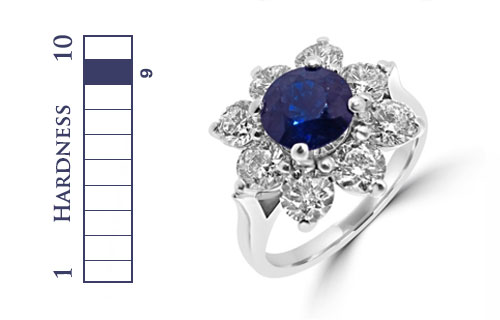
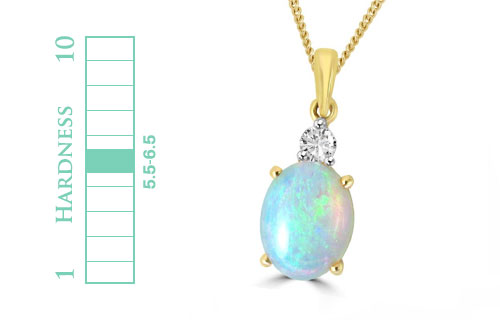
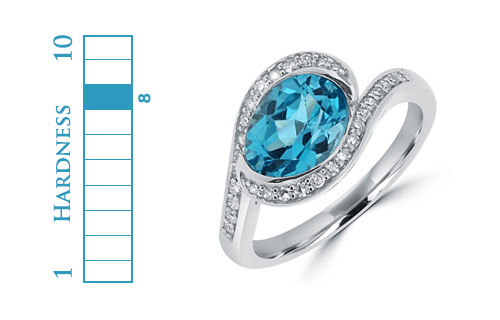
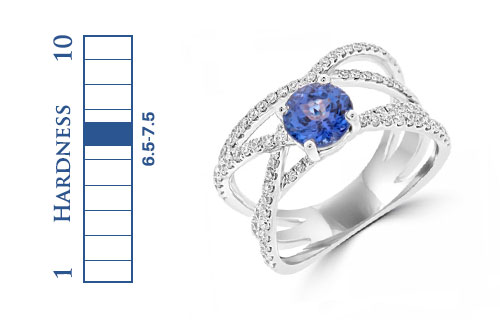




 0141 221 5855
0141 221 5855 Send us an email
Send us an email






 Secure payment methods
Secure payment methods


